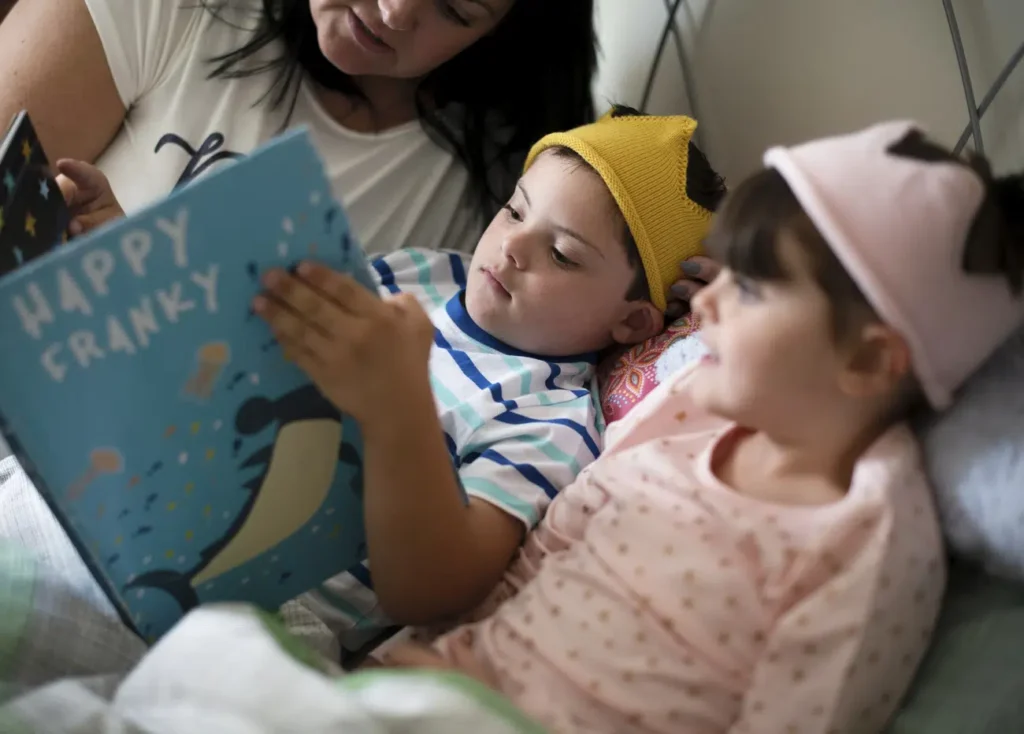So simple and peaceful, yet for many elusive and a source of anxiety. Sleep ultimately is about allowing the nervous system and the body the time required to flush out the toxins, repair the damage and prepare sufficient energy for the day ahead. Some research indicates that sleep patterns influence dementia risk1, others show a complex interplay with diagnoses such as ADHD2 (Attention Deficit and Hyperactivity Disorder).
What Might Tracking Sleep Tell You
For those of us who like using sleep trackers there is so much to learn about what supports and what hinders the recovery time that is afforded our nervous system by sleep. As like many things in life there is a “Just Right” zone – too long to get to sleep is an issue, for most this is a ruminating mind or a heart rate that won’t slow sufficiently that gets in the way, but too short is also not ideal – a sign of an overtired nervous system. Sleeping shorter than is your body’s requirement leaves you tired, but then so does sleeping longer than your natural cycle.
Sleep and Self Regulation
As an Occupational Therapist I see the consequences and benefits of sleep on a daily basis. When most people see a highly active child they admire the level of energy – how do they keep going at that pace – I immediately wonder about their sleep and their capacity to self regulate. In order for anyone to self regulate, that is to match their energy and nervous system capacity to the demands of the task, and then to quickly recover following stressors (positive or negative), their nervous system needs the opportunity to complete the deep rest and recovery cycle that deep sleep provides. But for those children and adults who struggle or don’t reach that deep sleep cycle at all, the observable outcomes can vary. Some appear disengaged, low in energy and sleepy – largely what you would expect – but many, particularly children experience heightened levels of activity or hyperactivity and fleeting attention. Picture what has been seen by many a parent when faced with an overtired 2 year old – they bounce off the walls, can’t pay attention, can’t actively listen (that is, attend, process and respond to what is being heard), can’t respond appropriately to the emotions of others and then have difficulty falling asleep. Just because a child isn’t 2 years of age doesn’t mean you won’t see the same outcomes for an older child or an adult who is also overtired, and just because someone is in bed for 8-10 hours doesn’t mean they have reached the rest and recovery offered by deep sleep or that they haven’t taken a long time to actually get to sleep.
Difficulties Achieving and Maintaining Sleep

Difficulties achieving and maintaining sleep can be elusive for many children and adults. Some have defined physical or mental health diagnoses that may be contributing to these issues, others experience difficulties in cycles, particularly women in response to hormonal cycles, and others it is about what they ate, drank, or did during any particular day. For others it’s all of those thrown in together and mixed around until you can’t work out one from another.
If you’ve ruled out medical issues with your doctor then next we move into considering your overall self regulation. At its core regulation is about how our nervous system manages stress and stress can be defined as anything that requires you to use energy to return the nervous system back to homeostasis. That means there are both positive and negative stressors – positive stressors still use energy to get us back to homeostasis but they add whereas negative stressors use energy for the return but they subtract. Consider exercise – we know it is good for us, it builds muscle, supports the maintenance of dense bones and is generally jam packed with heavy work and movement which are wonderful sensory inputs for assisting in emotional regulation. It adds, but yet is also a stressor, that is it takes energy usage to recover following. Caffeine and sugar, oh so yummy, but use energy to recover following intake, that is they are stressors on the nervous system, but are they positive or negative? For me as a perimenopausal woman I eat sugar and hot flashes here I come – a definitely negative stressor. Yet caffeine is not so clear – some research shows supportive or positive elements, others negative. Simple, right!
So here is where we need a great detective (think Veronica Mars, Hercule Poirot, Sherlock Holmes, Scooby Doo), because no person’s nervous system is the same so no person’s balance between what stresses and what recovers is the same. I’m reading a great book at the moment – “When the Body Says No” by Gabor Mate3. In this book Dr Mate explores the connections between physical illness and disease and stress, as well as looking at the techniques to support healing. In Chapter 3 Dr Mate notes that the research literature identifies three factors that universally lead to stress – “uncertainty, the lack of information and the loss of control.” In my clinical experience uncertainty and a loss of control are regular features in the picture that make up sleep difficulties for many of my clients, particularly when looking at sleep from a trauma informed perspective. For some, giving into sleep can feel like a significant loss of control, particularly when sleep is then plagued by nightmares or flashbacks. The nervous system senses a threat – perceived or real it doesn’t matter – the nervous system will still respond to try and keep us safe. Up goes the arousal level keeping sleep away or light.
Using Co and Self Regulation to Support Sleep

So as an Occupational Therapist working with clients with both self regulation and sleep difficulties, predictability and calming the nervous system are often where we begin when we move into directly looking at sleep – being aware that sleep is rarely where we start. A predictable routine, not only the time of sleep, but also the activities before and after, with a clear communication of what that routine is, be that using visual aids or verbally communicated. Maybe that starts with the time after dinner – cleaning up together, a quiet game, a warm bath, avoiding screens – and then opportunities for having their “safe” person with them to allow for co-regulation and building of a consistent attachment – a snuggle up in bed for a song or a book or to do a meditation together. Having a consistent morning is also important as it gives the nervous system predictability as to what is going to happen when I wake.
Once the basic routine is worked out it then provides wonderful opportunities to build in sensory activities that help reduce overall nervous system arousal level. Warm colours and dim lighting, deep slow touch pressure (ensuring the child is in control of that touch) be that person to person like a hug or cuddle or through weighted or compression options like Lycra or weighted toys or blankets, soothing smells, talking with a quiet more monotone and deeper voice and/or listening to music with slow and consistent beats. Mindfulness or meditation provides a great opportunity for breath control, with long out breaths or focused attention (you can find lots of guided meditations and mindfulness options on apps like Insight Timer and HeadSpace). Be aware that some people find meditation too threatening to the nervous system (trying to empty their mind invites in unwanted past memories or experiences), so while it can still be a highly valued option it might be better to explore something with a clear visual or auditory focus point. You might also try music or sound either during the slow down routine or as part of the routine as the safe person leaves to assist with that transition toward sleep.
Sleep though is crucial to our health and wellbeing, be we child or adult. If you are really struggling, along with talking to your doctor, working with an Occupational Therapist who has additional training and understanding of nervous system regulation can be incredibly helpful.
I bid you all a peaceful, deep and restorative night’s sleep. Sleep Sweet.
Kathy Clarkson, Registered Occupational Therapist.
References
1 “Sleep Disturbances and Dementia Risk in Older Adults: Findings From 10 Years of National U.S. Prospective Data”, Roger Wong & Margaret Lovier, American Journal of Preventive Medicine, January 25th 2023.
2 “ADHD, Sleep and Sleep Disorders”, National Resource Center on ADHD, A Program of CHADD. https://chadd.org/wp-content/uploads/2018/04/sleep.pdf
3 “When the Body Says No – The Cost of Hidden Stress”, Gabor Mate MD, Vintage Canada, 3rd February 2004

0 Comments for “Sleep is an amazing thing.”